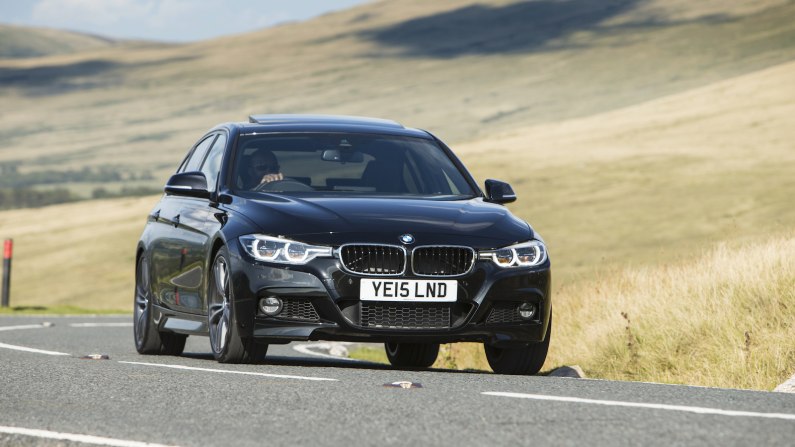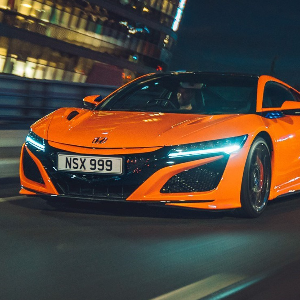
The BMW 3 Series is one of the most popular models for the German brand. A wide choice of model options and excellent handling make it a rewarding car to own.
PROS:
+ Wide variety of versions available
+ Thoroughly engaging to drive
+ Decent on-road handling
CONS:
- Best features are optional
- Maintenance costs
- Has a firmer ride than its rivals
Verdict: The BMW 3 Series was an instant hit when it debuted, and it remains a great car today on the used market. It puts its other German rivals to shame in the handling stakes and has aged well to have plenty of appeal today.
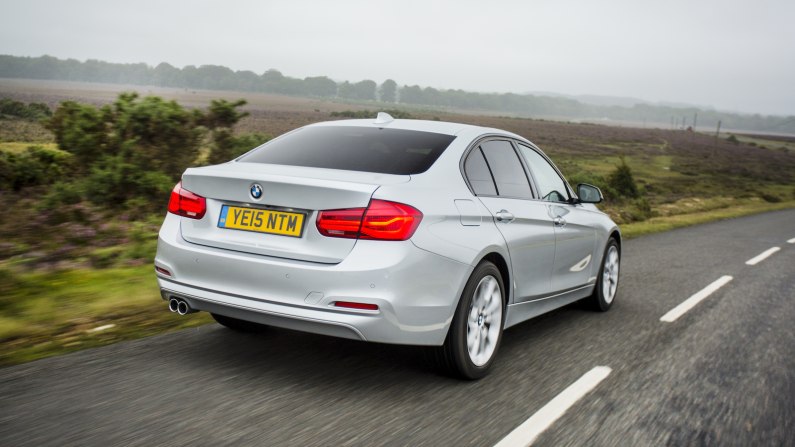
Used BMW 3 Series (2012-2019) review: the five-minute read
This is the sixth-generation BMW 3 Series, though if you’re an aficionado of the Bavarian brand, you’ll possibly refer to its by its ‘F30’ internal model designation. It is one of the company’s top-selling models and for a good reason too. Not only does this version have decent looks, but it drives sweetly, if a little on the firm side, in comparison to its competition.
Who are its rivals? Primarily the Audi A4 and Mercedes-Benz C-Class, but the Jaguar XE, Lexus IS, and even the Alfa Romeo Giulia should be considered worthy competition. Where the 3 Series stands out the most is in the handling department. It features what is easily the best steering in the segment despite BMW softening it up a little to aid motorway driving.
Part of the sharp handling can be attributed to the BMW having a firmer-than-average suspension setup, which is amplified with the M Sport models that get a stiffer setup and larger alloy wheels. It’s not something to put you off the car, but we recommend trying it out before you buy. Some cars do come with the optional adaptive suspension and this feature does make a positive difference.
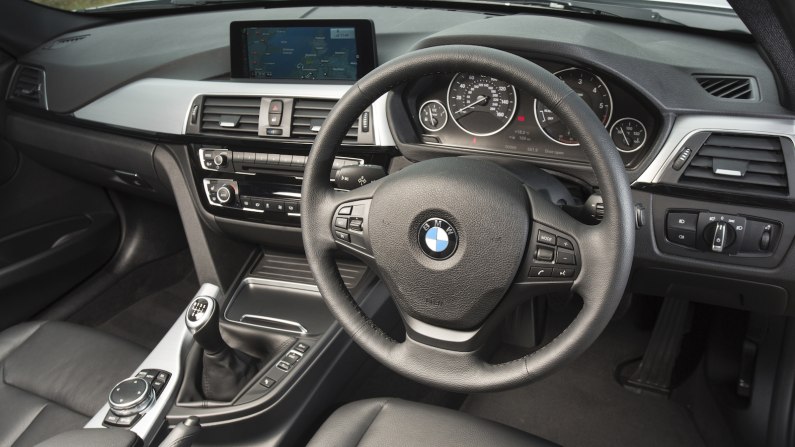
A variety of engines and performance levels are available, not to mention the range-topping M3. Power outputs range from 114bhp to 309bhp across petrol and diesel engines, with the 320d being one of the most popular models due to it being a hit with company car drivers when new. Most 3 Series are rear-wheel drive with either a six-speed manual or eight-speed automatic, and the latter is one of the best autos around. BMW did offer the 3 Series with an all-wheel-drive transmission that is badged as xDrive. A plug-in hybrid called the 330e could cover up to 25 miles on battery power alone.
The interior is the classic BMW layout of practical and ergonomic design, though many find the pedals in the manual to be more offset than usual. In typical premium car style, the higher up the specification grades you go, the more equipment you get, but even entry-level models get decent standard equipment.
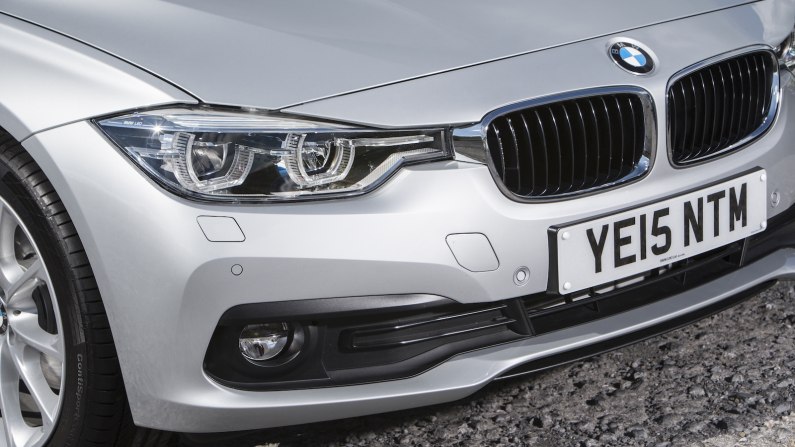
Interior space is reasonably good, and in the rear there is 50mm more legroom in this 3 Series than the previous generation. With boot space measuring 480 litres, it matches both the A4 and C-Class and similar to those, BMW also offers an estate version that it calls the 3 Series Touring. It didn’t provide a great deal more space at 495 litres, but that could increase by dropping the rear seats down — a feature that isn’t standard on all 3 Series saloons. Not only does the Touring look great, but it also allows owners to quickly access the boot via the rear window rather than having to open the tailgate.
It may sound cliched, but the 3 Series is the drivers’ car of the segment and that reflects how it performs on the road. It copes well with blocking out road and wind noise on the motorway and provides ample entertainment and involvement when driven on good B roads.
For great BMW 3 Series deals click here
Extended read…
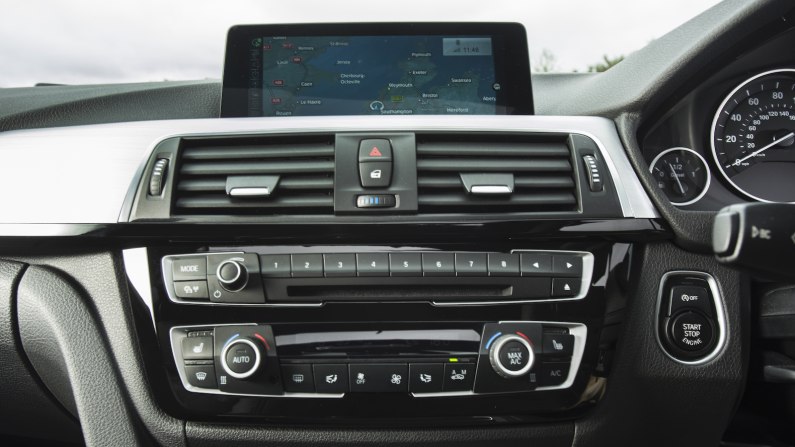
Used BMW 3 Series (2012-2019) Interior and infotainment
The interior of this F30-era BMW 3 Series still looks as attractive today as it did when introduced in 2011. There’s a familiarity with its predecessor, and that was something of a deliberate move by BMW. After all, when the 3 Series is one of the most successful models, why mess with the formula? On a practical level, the rear legroom in this generation did increase by 50mm over its predecessor.
The interior looks also depend on the specification level, as lower grade ES models get cloth seats while Sport models add some more colour inside. With M Sport there is full leather upholstery with M logos on the seats, ambient lighting and a different steering wheel.
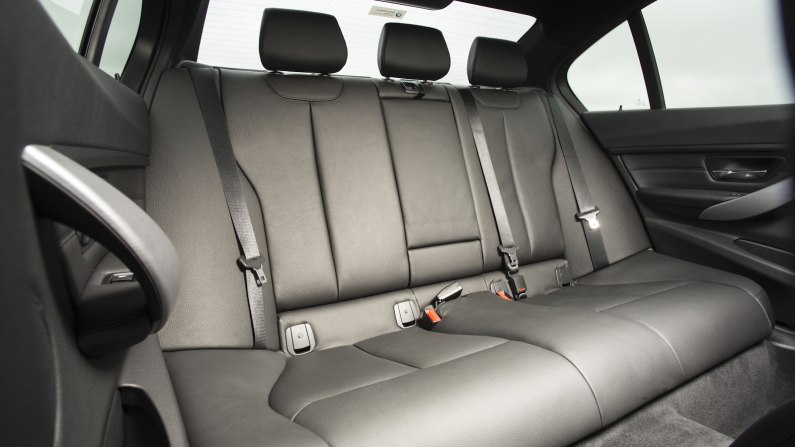
All versions get air conditioning, Bluetooth phone connectivity, DAB radio and sat nav via the colour display on top of the dash managed through the intuitive rotary iDrive controller. It’s one of the best infotainment systems of this era and is very easy to use when on the move. The 3 Series did offer a long list of optional extras, such as a head-up display and all-around camera systems for parking. These are nice things to have, so look out for them when car shopping.
Buy a new or used BMW 3 Series
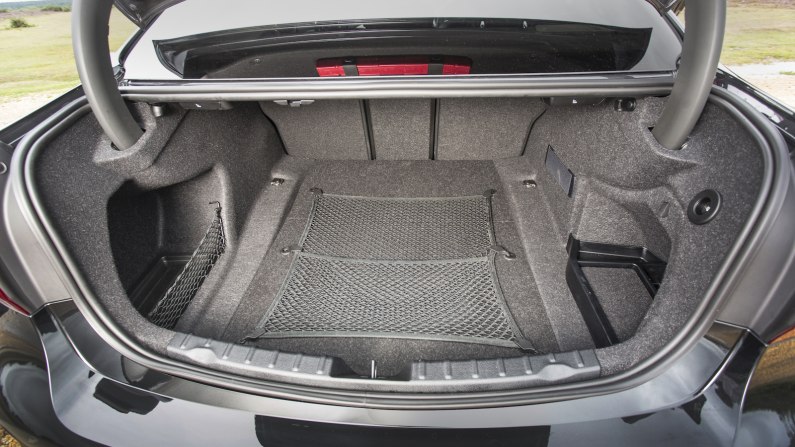
Used BMW 3 Series (2012-2019) Practicality and boot space
Against its nearest rivals, the Audi A4 and Mercedes-Benz C-Class of the same era, there’s no difference when it comes to boot space. At 480 litres, the BMW provides adequate space, more than what you’ll find in a C-segment hatch like a Ford Focus, but less than what you’ll get in a mainstream saloon like a Volkswagen Passat.
Some cars did come equipped with split-folding rear seats, but not all do, so that’s something to look out for when shopping. It’s also worth noting that due to the placement of the battery, the 330e plug-in hybrid has a smaller boot measuring 370 litres. If you need a little more luggage space, the 3 Series Touring provides 495 litres and with the 40:20:40 rear seats folded down, and the total volume increases to 1,500 litres. The Touring model also has the added benefit of offering access to the boot via the rear window without opening the tailgate. BMW also offered an electrically operated tailgate, and owners could also open this by waving their foot below the rear bumper if their hands were full.
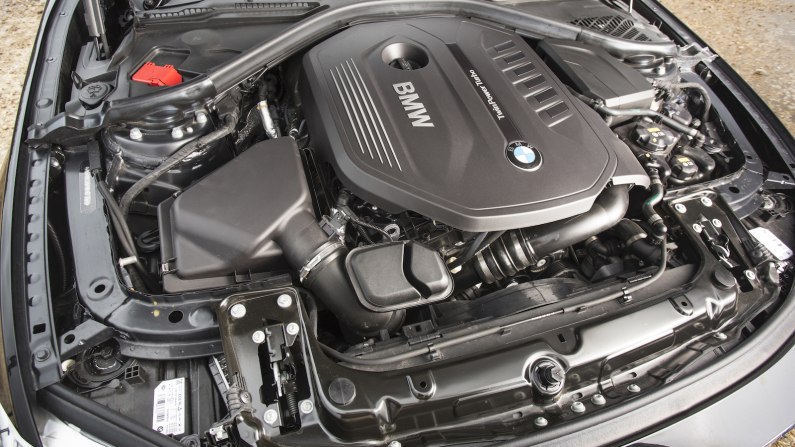
Used BMW 3 Series (2012-2019) engine and gearbox
BMW is a manufacturer that offers a wide scope of engine options in its range, and this is no different with the 3 Series. The entry points to the range are 316d diesel with 114bhp and 136bhp 316i, which was subsequently rebadged as the 318i. Keener drivers will find this lacking a little in performance, so looking at the 181bhp 2.0-litre 320i is worthwhile. Other petrol engines include the 241bhp 328i and 248bhp 330i, while true BMW aficionados will be drawn to the 3.0-litre six-cylinder 335i or 340i models with 302bhp and 231bhp respectively.
The rest of the diesel engine range consists of a 148bhp 2.0-litre 318d and 181bhp 320d, the latter being a popular company car choice and is one of the most common models available on the used market. A brawnier 218bhp 325d is also worth a look. BMW also slotted two 3.0-litre six-cylinder diesel engines into the 3 Series in the form of the 254bhp 330d and 309bhp 335d.
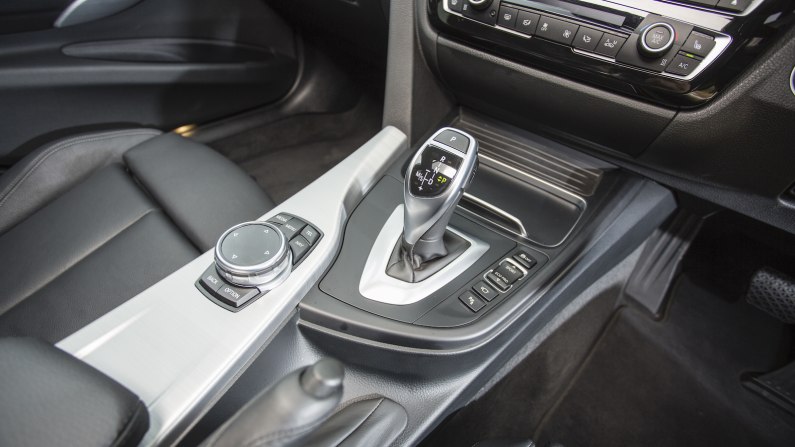
As mentioned above, BMW did also dip its toe into the plug-in hybrid market with the 330e. This model combines a petrol engine with an electric motor for a combined 248bhp and theoretical fuel consumption as low as 148mpg. The 11kWh battery was good for up to 25 miles of pure electric driving, making it appealing to those who may live in or near low-emission zones.
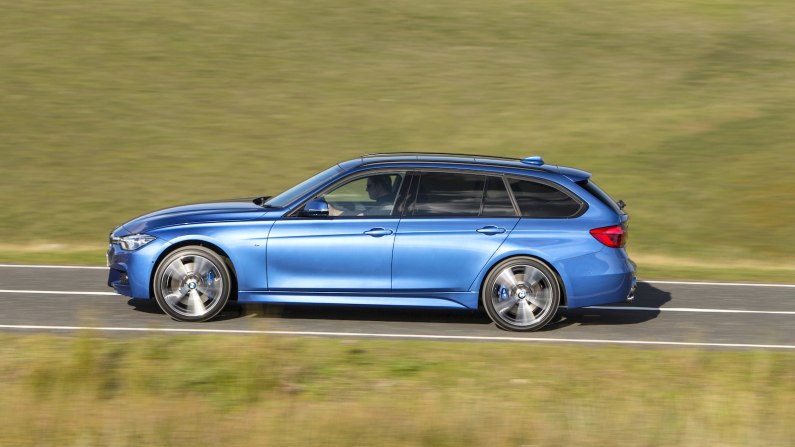
Used BMW 3 Series (2012-2019) Driving
When a company describes its cars as ‘the ultimate driving machine’, you expect handling to be good, and the BMW 3 Series doesn’t disappoint in this regard. When put up against its direct competitors, the 3 Series does have the most involving driving experience, with well-sorted suspension and finely-tuned steering.
Threading the 3 Series through a series of quick bends is a joy — even if you aren’t in one of the higher-performance models. There’s a natural sweetness to how the steering weights up on turn-in and the way it communicates to the driver. Add to that the rear-wheel-drive setup and near-perfect weight distribution, and you have a car that’s lovely to drive. The manual gearbox has an accurate and mechanical feel, though the eight-speed automatic is slick and works exceptionally well.
The 3 Series has a ride that is a touch firmer than the competition, but the standard setup remains nicely damped. Suspension is firmer with the M Sport versions, and when combined with larger wheels, results in a harsher ride that might not be to everyone’s taste. You may be lucky to come across a car with optional adaptive dampers. These are well worth having as they add more comfort when needed.
